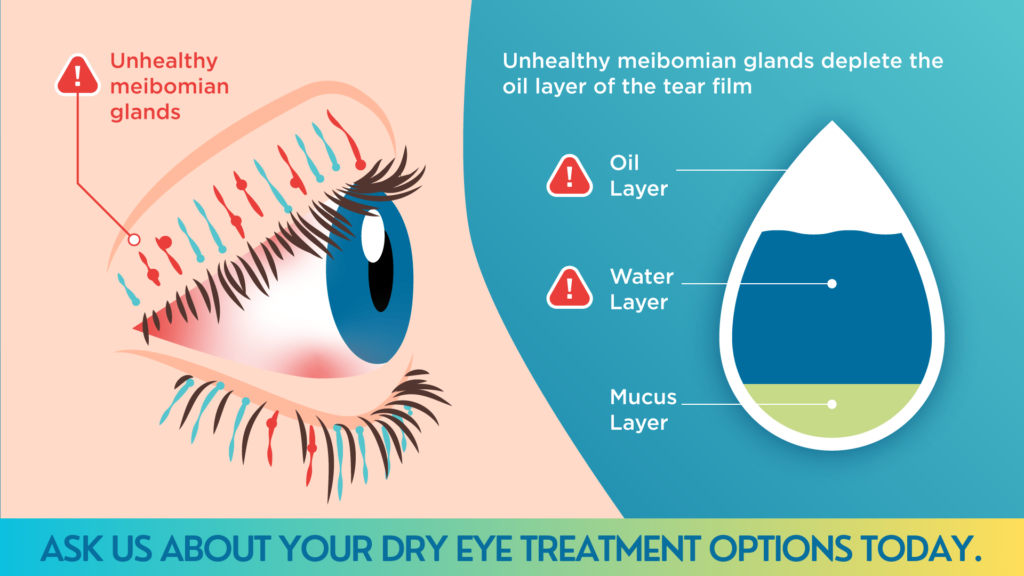Dry Eye Symptoms, Causes, and Treatment Options
We know how uncomfortable dry eyes can be, and we’re here to help.
You’re not alone!
What are the common symptoms of dry eye?
Everyone experiences dry eye a little differently. Some people will have many symptoms, while others may experience only one symptom. Dry eyes can be acute and last for only a short time, while chronic dry eye is a more serious condition that can last years.
Typical symptoms include:
- Eye redness, or eyes that appear irritated and bloodshot
- A burning sensations in the eyes
- Eyes that feel itchy or as if they have something in them
- Increased sensitivity to bright lights or sunlight
- Excessive tearing, or eyes that always appear watery
What causes dry eye?
There are many possible causes of dry eye.
In some cases, the cause is obvious, such as environmental irritants or short-term inflammation.
Some of the other causes of chronic dry eye problems include:
- Disease or dysfunction of the meibomian glands
- Blepharitis
- Allergies
- Hormone changes or deficiencies
- Defects that affect the eyelid or shape of the eye
- Certain medications
- Abnormal eye pressure
- Deficiency of aqueous fluids
Because the underlying causes vary, treatment methods after diagnosis will also vary according to the patient. It is also not uncommon for there to be more than one cause for dry eye.

How is dry eye diagnosed and treated?
Through imaging of the meibomian glands, measuring osmolarity of the tear film, and screening for certain conditions, we are able to diagnose and provide relief from many dry eye symptoms.
Some of the treatments we offer include:
- Prescription eye drops to combat inflammation.
- Treating oil gland dysfunction with heat therapy and manual gland expression.
- Punctal occlusion, which prevents tear loss to help keep eyes lubricated.
- Intense pulsed light (IPL) therapy to reduce inflammation, eliminate bacteria around the eyes, and treat meibomian gland dysfunction. Our IPL solution is FDA-approved for improving signs and symptoms of dry eye disease.
- Blinking exercises to increase tear production and distribution.
- Therapeutic contact lenses, in addition to other treatment methods.
If an infection is causing the issue, low-dose antibiotics may also be prescribed.
There are many myths surrounding dry eyes that lead affected individuals to delay treatment.
We understand that dry eyes aren’t just uncomfortable – they can indicate issues with eye health and affect your quality of life.
Book an appointment today to find relief.
